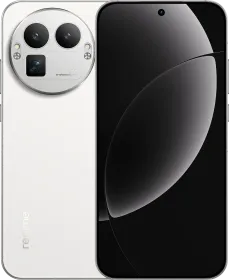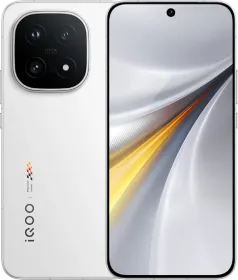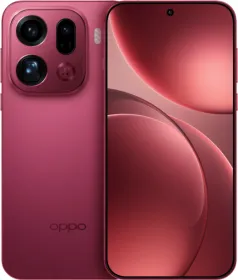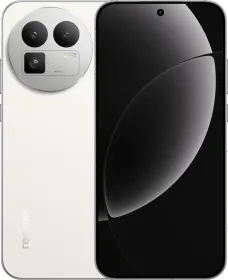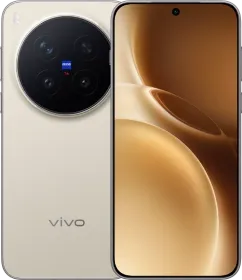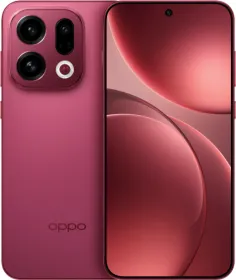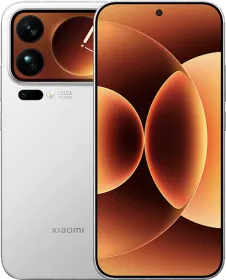After using the realme GT 8 Pro, it became clear that this phone is not trying to repeat the GT 7 Pro formula. It feels more deliberate, more focused, and in some ways more ambitious. realme has taken its usual gaming-heavy identity and layered it with a new emphasis on photography and design.
At the same time, the GT 8 Pro carries a few choices that are difficult to justify at this price. The lack of an LTPO panel is one of them. The use of a slower USB 2.0 port is another.
The GT 8 Pro enters the market at a higher price, positions itself directly against the OnePlus 15 and the Find X9, and aims to offer the kind of performance and cameras that can appeal to power users and photographers alike. But with stronger competition and rising expectations, the real question is simple. Has realme done enough to justify the jump? Let’s find out in this detailed review.
realme GT 8 Pro Price & Availability
The realme GT 8 Pro starts at ₹72,999 for the 12GB + 256GB variant, while the higher 16GB + 512GB configuration is priced at ₹79,999. A ₹5,000 bank offer brings the effective price down for early buyers.
Although the overall pricing is higher than the GT 7 Pro, part of that comes down to increased memory costs this year, which has affected almost every brand across the segment.
The phone is available in the Urban Blue finish that I have been using, along with a Dairy White version. Sales are live on realme.com and major online platforms, including Amazon, along with offline realme stores.
Pros
- Bright 2K display with 2000 Nits HBM
- Great design with swappable camera decos
- Strong gaming performance with Snapdragon 8 Elite Gen 5
- 200 MP 3X periscope delivers great results and close focus
- Ricoh mode is great for street photography
- Fast charging with 120W wired & 50W wireless
- Great battery life
- Strong haptics
- Smooth and customizable realme UI 7.0
- Loaded with AI features across the camera and system
- Good stereo speakers
Cons
- No LTPO display at this price
- USB 2.0 port
- Main camera can overexpose at times
- Occasional white balance issues with warm lights
- Bloatware is still present on a premium phone
realme GT 8 Pro Specifications
- Display: 6.2-inch LTPO Dynamic AMOLED 2X, 1-120 Hz, 2600 Nits, 2340 X 1080, 416 PPI, Gorilla Glass Victus 2
- SoC: Snapdragon 8 Elite for Galaxy (2 x 4.47 GHz Oryon V2 Phoenix L + 6 x 3.53 GHz Oryon V2 Phoenix M, Adreno 830, TSMC 3 nm)
- RAM: 12 GB LPDDR5X
- Storage: 256/512 GB UFS 4.0
- Main Camera: 50 MP Samsung ISOCELL GN3, 1/1.56-inch, f/1.8, OIS, AF, 24mm, 4K30/60/8K30
- Ultra-wide Camera: 12 MP Sony IMX564, 1/2.55-inch, f/2.2, FF, 120°, 13mm, 4K30/60
- Telephoto Camera: 10 MP Samsung ISOCELL 3K1, 1/3.94-inch, f/2.4, OIS, 3X optical, AF, 69mm, 4K30/60
- Front Camera: 12 MP Samsung ISOCELL 3LU, 1/3.2-inch, f/2.2, 26mm, AF, 4K30/60
- Speakers: Stereo speakers
- Battery and Charging: 4,000 mAh, 25W wired, 15W wireless
- IP Rating: IP68 (1.5m for 30m)
- Connectivity: 5G, Wi-Fi 7, Bluetooth 5.4, NFC, eSIM
- Biometrics: Under-display ultrasonic fingerprint, 2D face unlock
- Weight: 162g
- Build: Glass back, metal frame
realme GT 8 Pro Review: Design and Build

The GT 8 Pro introduces one of the most experimental design concepts realme has attempted. The switchable camera bump is its headline hardware idea. It is not just a visual aesthetic but a physical module that users can unscrew and replace with alternate designs.

The process is straightforward. You remove the screws, swap the module, tighten it back, and the phone immediately clicks into place. The experience feels almost mechanical, something that stands out in an industry where everything has become sealed and monolithic.
You can choose between two different styles as of now, at least in India. The phone includes a case for the circular camera module, but you can also get the one with a rectangular cutout. The phone can also be used without the outer module, and it looks really good that way as well.



The paper-textured back on the Urban Blue variant is quite tactile. It is crafted from recycled materials and organosilicon leather, and each phone carries its own distinct grain pattern.
The surface held up well against fingerprints and scratches in my usage. It has a matte feel that is pleasing to grip. The frame uses color-mixed matte metal, and the subtle two-tone interplay between the frame and the bump gives the phone a layered look.
The phone measures 8.2 mm thick and weighs around 214 grams. The weight is distributed well and does not feel top-heavy despite the large telephoto module. The rounded flat screen has soft transitions along the edges, making it comfortable for long-term use despite the larger footprint.
Build quality is solid across the chassis. Gorilla Glass covers the display, and the rear finish should handle wear and tear better than synthetic leather textures used on older phones as per realme. You also have the RICOH GR branding on the phone at the top right, which looks really classy in my opinion. The phone is IP68 and IP69 rated for dust and water resistance.
The GT 8 Pro feels premium in every way. It feels refined and well-machined, and the modular bump gives the device a small but meaningful touch of personality. I personally like it.
realme GT 8 Pro Review: Display

The GT 8 Pro uses a 2K resolution AMOLED panel with a peak brightness of 7,000 Nits and 2,000 Nits of HBM. This is an extremely bright panel, perhaps the brightest in its class at present (until the iQOO arrives).
Visibility outdoors is excellent. Under the harshest afternoon sunlight, the panel remains legible without the need to max out the brightness slider manually. The clarity holds up even when using the camera outdoors, and that is something many displays struggle with.

Despite being an LTPS panel, the refresh rate hits up to 144 Hz, and realme uses an advanced motion algorithm to maintain smooth transitions across the UI. It is still not as efficient as LTPO. The inability to drop the refresh rate to 1 Hz for an always-on display is a major drawback. realme should not have made this compromise, considering their previous device was using an LTPO panel.

However, the display quality itself is strong. The 2K resolution is really good. The circular polarizer allows better visibility with sunglasses, and the full DC dimming support means the panel is kinder on the eyes during nighttime use. The PWM dimming frequency is 2600 Hz, which is excellent.
The screen can drop to 1 Nit, and paired with 3,200 Hz instant touch sampling, the responsiveness is excellent during gaming.
The display is still one of the GT 8 Pro’s strongest features. The only drawback is the lack of LTPO. At ₹73,000, this should have been included. If LTPO is a priority, waiting for the vivo X300 makes sense, but that device will also come with a smaller display, which may not appeal to users who want something larger.
realme GT 8 Pro Review: Speakers and Haptics

Audio performance on the GT 8 Pro is satisfying. The symmetric dual 1115E speakers deliver great stereo output. The bass response is stronger than expected, and realme uses their new N Bass enhancement to add depth without distortion.
Haptics are handled by the 0816 ultra haptic motor. The feedback is tight, punchy, and sharp, and the integration across the UI is well tuned. Every swipe, pull, and toggle has feedback.
realme GT 8 Pro Review: Software

The software experience on the realme GT 8 Pro is one of the first things that stood out to me, because it is just so good. realme UI 7.0, built on Android 16, is smooth, fast, and surprisingly polished. There has been clear effort put into optimization this time, and it shows in the way the phone moves through transitions, opens apps, and handles heavy workloads without hiccups.
It is also one of the most customizable Android skins right now, although some of the visual direction is very obviously inspired by Apple’s Liquid Glass design. realme calls this “Light Glass,” but the resemblance is impossible to ignore.

The visual layer now uses translucent panes, soft highlights, and glass-like textures across the UI. The icons adopt the new Ice Cube style, which gives them a subtle depth, although the aesthetic is lifted directly from iOS.

The Misty Glass Control Center expands this theme to the quick toggles, adding that frosted blur effect with outlines to the background. The Breathing Dock and enlarged folders also have the same design, but personally, I prefer turning these off because the UI looks better without all of this.

Customization options are extensive. The new Flux engine handles animations and makes transitions interruptible, so apps open and close without any jarring stutter. System-wide animations have also been improved.

You can now customize fingerprint animations even more by adding custom text and emoji-based unlock effects. Also, you can choose the icon and animations seperately. You also get full control over icon size, layout, and even color styling for your home screen. The Flux Desktop feature allows you to resize icons into 1×2, 2×1, or 2×2 tiles to reveal quick actions, which is genuinely useful.
The Always-on Display is finally full screen and supports detailed widgets and animated designs. Unfortunately though, this is limited to just 10 seconds due to the lack of LTPO.

Wallpapers can use Live Photos or videos, and the system can even apply depth effects to them automatically.
AI Features

AI is tightly integrated across the OS. AI Notify Brief generates scheduled summaries of notifications and allows quick replies directly from the summary cards. You can choose which apps are included or excluded, and the summarisation accuracy is usually reliable.
AI Framing Master helps with camera composition by suggesting a better frame based on the scene. This still needs some update though.

AI Smart Reply can now draft responses inside messaging apps while you’re gaming so you don’t have to switch out of full-screen mode. In games like BGMI or Genshin Impact, AI Highlight automatically records key moments and stitches them together into a short video.
The photo suite includes AI Glare removal, Reflection Removal, AI Landscape enhancement that eliminates haze, AI Unblur for motion blur issues, and AI Perfect Shot which detects faces and intelligently replaces the blurred ones.
You also get AI Sketch to Image for generating images from rough outlines on existing images, AI Ultra Clarity for upscaling photos to 4K, plus the usual AI Eraser and AI Recompose tools.
Additionally, you can give voice commands through Edit Genie and let the phone edit framing, background, and other parameters automatically using AI. If you don’t know what to do, then AI Inspiration can help you with contextual suggestions.
The overall processing speeds are quick, even when using AI Edit Genie. You do lose a bit of detail in certain edits, but the output quality is surprisingly usable.
On the voice and transcription side, the GT 8 Pro integrates AI VoiceScribe and AI Summary directly into the UI. It can transcribe meetings, summarise long recordings, and translate content on the fly, including YouTube videos. The transcription accuracy is solid and the summarisation is really helpful too.
The realme GT 8 Pro also ties itself into Mind Space. A three-finger swipe opens saves the screen to Mind Space instantly, letting you drop notes, screenshots, ideas, or tasks without interrupting what you’re doing. Everything is automatically synced, categorised, and summarised, and you can easily search your Mind Space entries.

AI Suggest is another addition, functioning as a predictive widget that recommends actions based on how you use the phone. AI Planner can detect events on your screen with a double-tap on the back and instantly add them to your to-do list or the calendar.

There is a gaming-focused layer too. AI Gaming Coach offers real-time tips based on your gameplay patterns, and the phone supports AI sound positioning in BGMI that helps identify enemy direction from footsteps. AI Gun Identifier works surprisingly well, too, recognising gun types from their firing sound and displaying them on screen.
AI Smart Loop and AI Translate round out the productivity tools, letting you perform continuous cross-app actions using simple gesture or translate text or speech instantly.
realme calls this entire suite Next AI, and while the branding is ambitious, the GT 8 Pro admittedly delivers one of the most comprehensive AI packages on any Android phone right now.
realme has also added iPhone and Apple Watch Connect, which lets you receive calls and messages from your iPhone directly on the GT 8 Pro, and sync basic health data from the Apple Watch. It’s limited compared to native iOS integration, but it is useful, especially for users who split their time between platforms.
realme GT 8 Pro is pre-loaded with some bloatware and other services on the phone, but those can be turned off within the settings. That said, I wish realme would not put such apps at least on a premium device like this one.
Daily performance is handled very well. The OS feels smoother than older versions of realme UI, and the GT 7 Pro aged well as per user feedback, so with four years of OS updates and six years of security patches promised for the GT 8 Pro, there is confidence that this device will also hold up long-term.
While the UI borrows heavily from Apple in its so-called Light Glass design, the underlying performance is very much Android at its best. It is fast, fluid, responsive, and packed with features that genuinely improve the experience.
realme GT 8 Pro Review: Biometrics

The GT 8 Pro’s biometric setup is one of the strongest realme has implemented. The ultrasonic fingerprint scanner, unlocks faster, handles wet fingers without hesitation, and is more reliable in day to day use than the optical sensors.
The placement is comfortable and avoids the awkward low-position problem seen on some other phones. Face unlock works quickly as well, though as always, it is more of a convenience feature rather than a secure authentication method.
realme GT 8 Pro Review: Performance

The realme GT 8 Pro runs Qualcomm’s Snapdragon 8 Elite Gen 5 paired with the HyperVision+ AI chip. This dual chip approach gives the phone a massive performance headroom and a clear advantage in gaming. You also get up to 16GB of LPDDR5X RAM and 512GB of UFS 4.1 storage.
The GT Mode remains available for pushing the chipset to its limits, and when enabled, the phone consistently produces some of the best numbers I have seen on any Android flagship this year (minus the 3DMark results).
In AnTuTu v11, my unit crossed 3.8 million points, and realme claims 4 million in ideal conditions. Geekbench results also line up with what you expect from the Snapdragon 8 Elite series, with strong single core and multi core runs.
The GPU is equally powerful and works in tandem with the HyperVision+ AI chip for gaming specific enhancements. They improve sharpness and frame rates in games like BGMI and COD Mobile. Here are some benchmarks we ran on the realme GT 8 Pro:
| Benchmark Test | Score / Result |
| AnTuTu v11.0.4 | 3,847,213 |
| AnTuTu Storage Test | 198,395; Sequential Read: 4281 MB/s; Sequential Write: 3346 MB/s |
| Geekbench 6 (CPU) | Single-Core: 3357; Multi-Core: 10617 |
| Geekbench 6 (GPU – OpenCL) | 25,158 |
| Geekbench 6 (GPU – Vulkan) | 28,439 |
| 3DMark Wild Life Extreme Test | Score: 6529; Average FPS: 39.10 |
| 3DMark Wild Life Extreme Stress Test | Best Loop: 7417; Lowest Loop: 2505; Stability: 33.8%, 40°C |
The 3DMark results on the GT 8 Pro are unusual. The best loop score hits 7417, the highest I’ve seen on any phone, but the lowest loop dips to 2505, pulling stability down to 33.8%. The graph oscillates sharply after loop 6, and temperatures climb from 29°C to 40°C as the test is finished.
Thankfully, despite this inconsistent synthetic behaviour, real-world performance remains solid and doesn’t reflect the instability shown in the benchmark.

BGMI on the GT 8 Pro currently runs at 120 FPS and stays there with surprisingly good stability. The gameplay feels responsive, and the touch sampling makes a difference. Genshin Impact holds a stable 60 FPS for long durations without major dips. The same goes for Wuthering Waves, I’ve got a smooth 60 FPS gameplay without any overheating issues or performance dips.
The single layer 7K VC cooling system, despite being thinner than the multi layer designs used by some competitors, manages heat very well. Even when playing titles like Wuthering Waves and Genshin, surface temperatures remained controlled and did not cause any major frame drop issues.
There is also the dual heavy load scenario that realme keeps highlighting. Running PUBG in the foreground and Genshin Impact in the background for an hour sounds unrealistic for most users, but the phone is capable of it.
The Signal Catcher chipset ensures that network drops do not interfere with gameplay. The balanced multi band antenna system helps maintain lower latency. Basically, the network performance is really good.
In terms of everyday performance, the GT 8 Pro is one of the fastest phones I have used this year. While the Snapdragon 8 Elite Gen 5 inside the OnePlus 15 still performs slightly better, realme’s gaming tuning is really good too.
realme GT 8 Pro Review: Cameras
The camera system on the realme GT 8 Pro has turned out to be one of the most interesting parts of this device. Not because realme has gone for the best hardware, but because of the new Ricoh partnership, the massive 3X periscope upgrade, and the amount of control offered across different modes.
(Note: We are still updating the review with camera samples. Please check back later.)
Main Camera
The main camera continues to use a 1/1.56-inch sensor with an f/1.8 aperture. This is the same size as last year, which might seem a bit disappointing at this price. That said, realme’s processing stack tries to extract as much detail as possible.
One of the best examples of this is the 50MP default photos. This is one of the only smartphones in the industry with such a powerful feature. Although 50MP is the default, the phone automatically chooses between 50MP, 25MP, and 12MP, depending the lighting conditions.
In good lighting, the main sensor produces high detail with good contrast and excellent texture rendering. Dynamic range is wide enough for most scenes and HDR usually kicks in without blowing out highlights.
I did see some oversharpening, especially in foliage or scenes with complex edges, and in lower light conditions the phone occasionally lifts exposure too aggressively which leads to slightly overexposed frames. These are software issues and realme could fix them, because the sensor is capable of much better.
Ultra-wide
The ultra wide camera relies on the OmniVision OV50D sensor. It performs fine in daylight with acceptable detail, controlled distortion, and consistent color alignment with the main lens.
In dim lighting, noise starts to show up and fine detail drops off, which is expected from this sensor size. It remains usable but not remarkable and does not challenge the best ultra-wide lenses in the category.
Telephoto
The most interesting part of this camera system is undoubtedly the 3X periscope. realme is using a 200 MP HP5 sensor here, the same base sensor found in the OPPO Find X9 Pro, but paired with a different optical system. The aperture is f/2.6 and the focal length is 72mm.
The larger sensor makes a huge difference because even with a narrower aperture, the amount of detail you can extract from the 3X lens is impressive. The periscope can focus at around 25 cm which is far better than many competitors.
This makes the GT 8 Pro surprisingly capable for close up telephoto shots. You also get clean and detailed performance up to around 15X before computational processing takes over. Beyond that, the AI pipeline becomes very aggressive and while you can push it to 120X, real world usability ends much earlier.
The low light performance of this lens is also impressive. However, I’ve noticed some extreme white balance issues, with photos turning completely orange even under slightly warm lighting. Hopefully, this can be fixed with a future OTA.
Portraits
Portrait photography is a strong point on this device. The 3X lens delivers flattering depth compression and the edge segmentation is handled well, even around hair and detailed textures. The skin tone rendering is realistic, and there is enough dynamic range in the background to avoid harsh clipping.
The phone allows portrait zooming up to 6X which gives an entirely different look and can be creatively useful. The beauty mode is available, for those who are interested.
realme x Ricoh
The GT 8 Pro also leans heavily into its Ricoh collaboration. The Ricoh mode is one of the best additions this year and gives the phone a unique character. You get film inspired styles such as Standard, Negative, Positive, B&W, and High Contrast B&W.
The default 3:2 aspect ratio makes the photographic output feel more intentional and cinematic too. The interface is designed for quick access and the swipe down gesture from the shutter jumps you into Ricoh mode instantly. It is genuinely fun to use and very capable for street photography.
RAW
The camera also supports RAW shooting along with RAW Max inside the Ricoh mode. RAW Max captures 44 MP files which preserve a decent amount of dynamic range for editing. In normal Pro mode you can shoot both JPEG and RAW but RAW Max remains exclusive to Ricoh.
High Resolution Mode
High Resolution mode lets you capture 200 MP images with a smooth animation while processing. This mode is slower but gives extremely detailed output when lighting is good, although file sizes become very large.
Shooting modes like Silhouette, Fireworks and Stage remain, and the Snapshot mode lets you capture fast action with minimal motion blur. Astrophotography mode is available too along with Long Exposure and Pro Video.
Videos
Speaking of which, video recording is quite capable as well. The main and 3X cameras both support 4K120 recording, and you can shoot in 8K30 if needed. The dynamic range in video is handled well and realme has improved stabilization over last year.
Cinematic video now records at 4K30, which is a big upgrade from the older limitations. You can also shoot HDR video at 4K30 and 4K60 on all the cameras. Front camera video quality is solid in daylight, but stabilization is only available at 1080p30. The front camera’s low light performance is quite soft though.
The absence of front and rear switching during recording is a limitation and something I hope realme solves in future updates. OPPO and OnePlus support this on similar hardware, so realme should bring it too.
realme GT 8 Pro Review: Battery Life and Charging

Battery performance is one of the biggest strengths of the realme GT 8 Pro. The phone packs a 7,000 mAh battery and the efficiency tuning is excellent. In my usage, the device consistently delivered between 10 and 12 hours of screen on time.
Even with heavy camera use and gaming, the GT 8 Pro refused to drain quickly. Standby power draw is minimal and realme’s AI based battery management does not behave aggressively by killing apps prematurely.

Charging speeds remain fast. Using the bundled charger, our lab test shows the GT 8 Pro goes from zero to full in around 45 minutes. It also supports 55W PPS charging and 50W wireless charging, a welcome addition as the GT 7 Pro lacked wireless charging.
Review Verdict: Should You Buy the realme GT 8 Pro?
The realme GT 8 Pro is built around some strong fundamentals. The display is excellent. The gaming performance is really good thanks to multiple auxiliary chips, a stable thermal system, and proper optimization. The camera experience is both creative and capable, even though it carries a few limitations and quirks that might need polishing.
The biggest downsides are the lack of an LTPO panel and the USB 2.0 port, both of which feel out of place at this price. But if you look at the overall package, the phone delivers excellent performance, a bright high quality display, great battery life, super fast charging, and a uniquely enjoyable photography experience through Ricoh mode.
For a starting price of ₹72,999 for the 12+256 GB variant (₹67,999 after offers), the GT 8 Pro sits in a competitive zone. If you want USB 3.2 speeds or LTPO, you should wait for the vivo X300 but that phone will be smaller. But if you want a flagship experience with a great camera system, excellent thermals, long battery life and a bright display, the realme GT 8 Pro is an excellent choice this year.

Smartprix ⭐ Rating: 8.7/10
- Design and Build: 8.9/10
- Display: 8.3/10
- Speakers: 8.7/10
- Software: 8.7/10
- Haptics: 8.5/10
- Biometrics: 9/10
- Performance: 8.8/10
- Cameras: 8/10
- Battery Life & Charging: 9.4/10
First reviewed in November 2025.

























